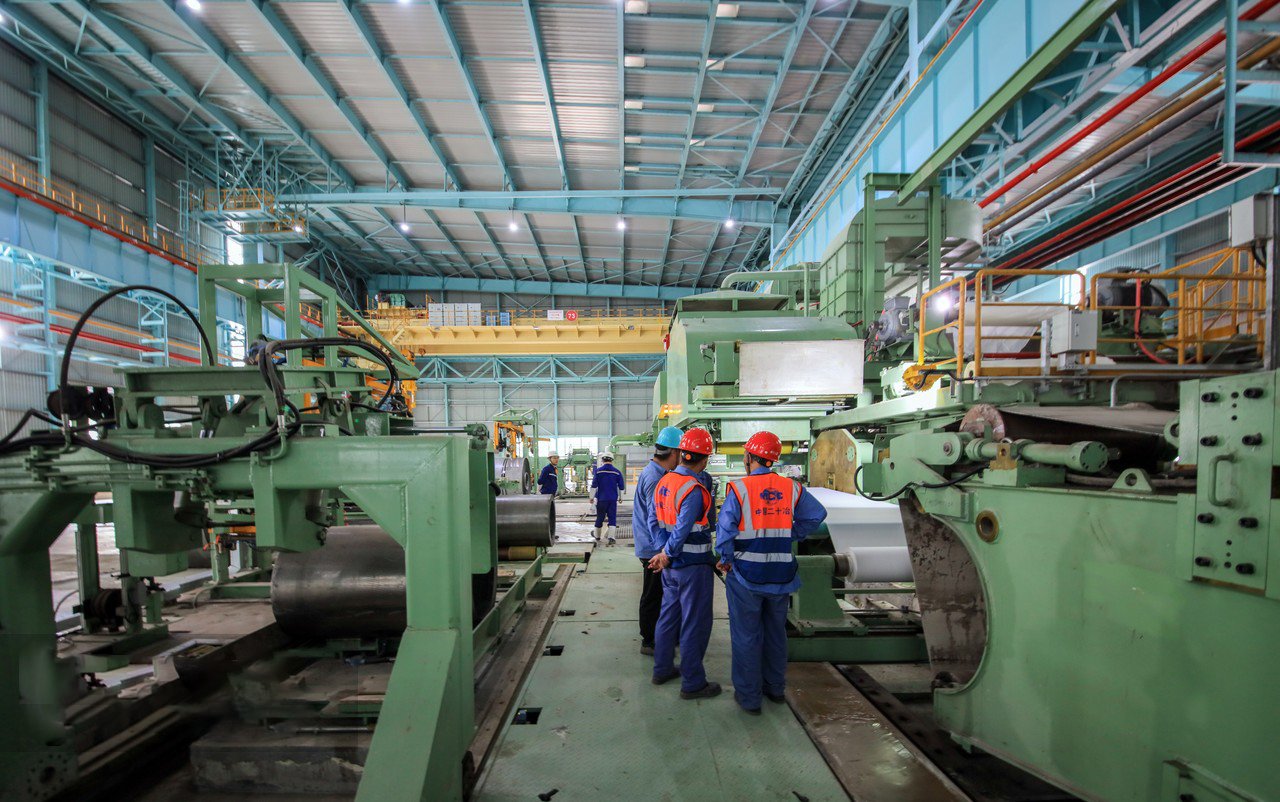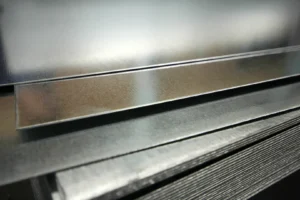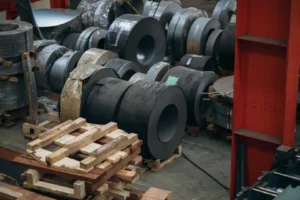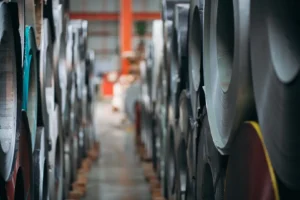2B vs BA Stainless Steel Sheet Finish: Which One Fits Your Project?

Are you struggling to decide on the right stainless steel finish for your project? The choice between a 2B and a Bright Annealed (BA) finish1 can seem minor, but it has significant impacts on cost, performance, and aesthetics. This decision often leaves even experienced project managers feeling uncertain.
A 2B stainless steel finish is a smooth, moderately reflective surface, while a BA finish is highly reflective with a mirror-like appearance. The choice depends on your application's specific needs for aesthetics, corrosion resistance, and budget, as defined by standards like ASTM A480 for flat-rolled steel2.
Choosing the wrong finish can lead to budget overruns or a final product that doesn’t meet aesthetic or functional standards. As the Global Business Director for MFY, I’ve guided countless clients through this exact decision. This article will demystify these two popular finishes, ensuring you can select the perfect one for your needs with confidence and clarity.
This choice is more than a line item on a spec sheet; it's a strategic decision that impacts your product's market position and your operational efficiency. For instance, a more reflective finish might seem premium but could be prone to showing scratches during fabrication, increasing handling costs. Conversely, a standard finish might save money upfront but fail to deliver the high-end look required for a consumer-facing product. We will explore the nuances of production, surface characteristics, and real-world applications to provide a comprehensive framework for your decision-making process.
What are the defining characteristics of 2B and BA stainless steel sheet finishes3?
Are you finding it difficult to articulate the precise technical differences between 2B and BA finishes to your team or stakeholders? This uncertainty can lead to specification errors. You need a clear, reliable breakdown of what defines each finish beyond just "dull" or "shiny."
The defining characteristic of a 2B finish is its smooth, moderately reflective matte appearance achieved by cold rolling and a final light pass on polished rolls. In contrast, a BA finish is defined by its bright, highly reflective, mirror-like surface created by annealing in a controlled atmosphere.
Understanding these foundational characteristics is the first step toward making an informed material selection. As we move forward, I'll elaborate on how these production methods, governed by international standards like ASTM A480, directly create the distinct properties of each finish. We'll delve into the specific metrics, such as surface roughness (Ra) and reflectivity values, that quantify these differences. I recall a client, an equipment integrator in Southeast Asia, who was specifying materials for a new line of commercial kitchen appliances. They were initially using 2B for all components to manage costs. However, for their premium line, the lack of a truly reflective, high-end look was a point of contention with their marketing department. By understanding the core differences, they realized a BA finish for visible surfaces was not just a cosmetic upgrade but a strategic move to differentiate their product tiers. This case highlights why a deep-seated knowledge of these finishes is crucial; it links technical specifications directly to business outcomes, from manufacturing efficiency to market perception.
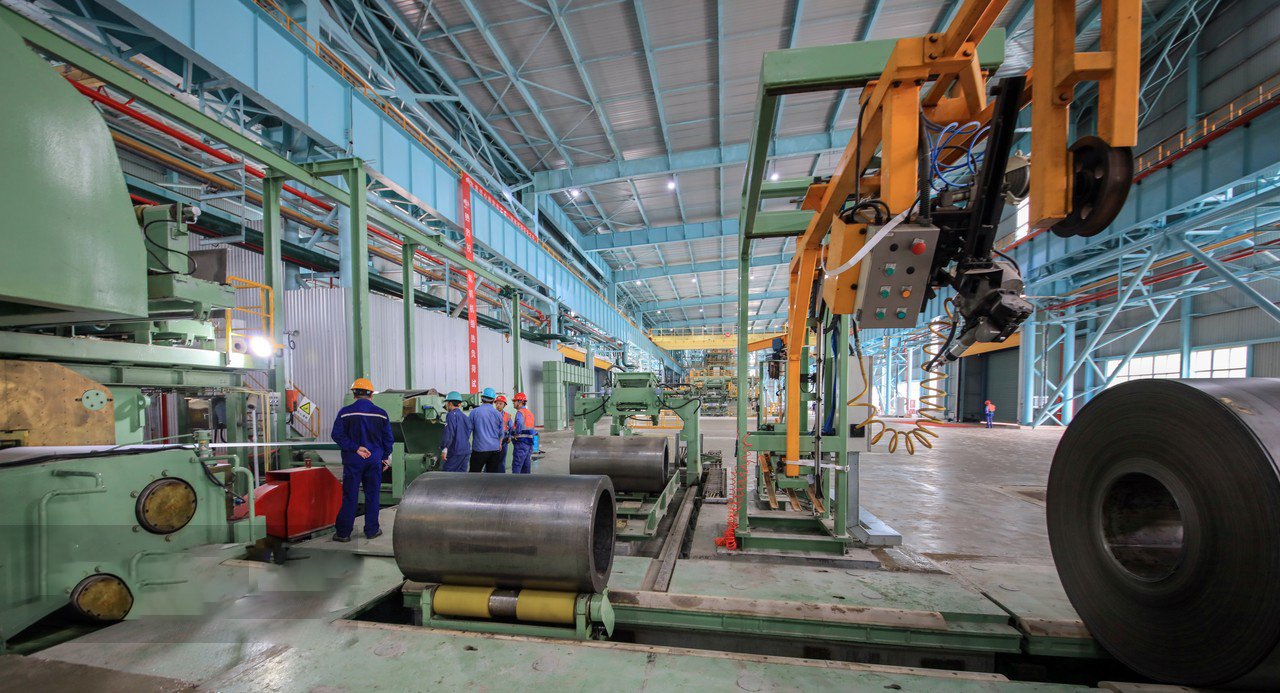
The journey from a raw steel slab to a finished sheet with a specific surface like 2B or BA is a testament to precision engineering. This distinction is critical for our partners, whether they are distributors stocking inventory or contractors planning a large-scale installation. Let's dissect the processes and resulting properties to build a solid foundation for your material strategy. This detailed exploration will equip you with the knowledge to not only select the right material but also to justify your decision based on technical merit and commercial viability, ensuring your project's success from the ground up.
The Mill-Driven Process: How Finishes Are Made
The fundamental differences between 2B and BA finishes originate in their manufacturing processes, specifically in the final annealing and finishing stages. Both finishes start as cold-rolled stainless steel. For a 2B finish, after the final cold reduction, the steel is annealed (heat-treated to soften it) and pickled (chemically descaled) to remove impurities and oxide scale, creating a uniform, dull surface. The crucial final step is a "skin pass" or "pinch pass" through polished rolls under light pressure. This does not significantly reduce the thickness but imparts a smooth, moderately reflective surface. This process is the industry standard, making 2B the most common and cost-effective finish available.
The creation of a BA, or Bright Annealed, finish follows a different path after cold rolling. Instead of being annealed in a standard atmosphere and then pickled, the steel is heat-treated in a highly controlled furnace with an inert atmosphere (like hydrogen or nitrogen). This protective atmosphere prevents any oxidation or scaling from forming on the surface during the annealing process. As a result, the sheet emerges from the furnace retaining the bright, reflective surface from the cold-rolling mill. It doesn't require pickling, which preserves its superior luster. This process is more complex and requires more sophisticated equipment, which is a primary driver of its higher cost compared to the 2B finish.
Understanding this process-driven distinction is key for procurement and fabrication. A client of ours, a large manufacturing company in India producing water tanks, relies exclusively on 2B finish. The moderate reflectivity is sufficient, and its durability during forming and welding is a known, reliable factor in their production line. The cost-effectiveness of 2B allows them to remain competitive in a price-sensitive market. For them, the additional cost of BA offers no tangible benefit that their end-users would value. This practical application demonstrates how the manufacturing method directly translates to cost and suitability for a given industrial purpose.
Quantifying the Surface: Roughness and Reflectivity Metrics
Beyond visual inspection, the characteristics of 2B and BA finishes are quantified by objective metrics, primarily Surface Roughness (Ra) and reflectivity. Surface Roughness, measured in micrometers (µm), indicates the microscopic peaks and valleys on the steel's surface. A standard 2B finish typically has an Ra value ranging from 0.1 µm to 0.5 µm. This level of smoothness is excellent for a wide range of applications and provides a good base for further polishing if required. Its moderate smoothness strikes a balance between performance and cost.
In contrast, the BA finish is significantly smoother. Its Ra value is typically in the range of 0.05 µm to 0.1 µm. This ultra-smooth surface is what contributes to its high reflectivity and mirror-like appearance. With fewer microscopic crevices for light to scatter, more light is reflected directly, creating a sharp image. In terms of reflectivity, a 2B finish might reflect 40-60% of light, giving it what some describe as a "cloudy mirror" effect. A BA finish, on the other hand, can have a reflectivity level of 70-90%, placing it much closer to a true mirror polish (like a No. 8 finish).
These numbers are not just academic; they have direct practical implications. For an architectural project in the Middle East, one of our contractor clients was designing decorative exterior panels. They required a finish that would catch the sunlight beautifully but not create excessive glare. They initially considered a mirror finish but found it too intense and costly. After reviewing the spec sheets, they chose a BA finish. Its high reflectivity provided the desired vibrant look, while its slightly less-than-perfect mirror quality produced a more diffused, aesthetically pleasing shine. The Ra value also assured them of better resistance to particle accumulation and easier cleaning in a dusty environment.
The Role of Industry Standards (ASTM A480)
To ensure consistency and quality across the global supply chain, these finishes are defined by industry standards, with ASTM A480 being the most referenced specification for flat-rolled stainless steel sheet. This standard provides clear definitions for mills and purchasers. ASTM A480 describes the No. 2B finish as "a smooth, moderately reflective cold-rolled annealed and pickled or descaled finish" created by a final light pass on polished rolls. It defines the Bright Annealed (BA) finish as "a smooth, bright, reflective finish typically produced by cold rolling followed by annealing in a protective atmosphere."
These standards are the common language that we at MFY and our clients use to guarantee that the material ordered is the material received. When an engineering contractor specifies a 304L stainless steel sheet with a 2B finish per ASTM A480, they know the expected range of reflectivity, the surface quality, and its suitability for subsequent fabrication processes like welding or forming. This removes ambiguity and ensures predictable performance. It gives them confidence that the material's corrosion resistance and mechanical properties are up to par.
The reliance on standards like ASTM A480 is a cornerstone of our integrated supply chain. It allows a distributor in Russia to confidently stock our stainless steel sheets, knowing they meet the same quality benchmarks as those used by a manufacturer in India. It ensures that when we promise rapid export delivery, the product that arrives is not just on time but also precisely manufactured to the globally recognized specifications required for the client's project, whether it's for industrial tanks, architectural facades, or high-purity piping.
2B finish is cold-rolled and annealedTrue
The 2B finish process involves cold rolling followed by annealing and pickling to create its characteristic matte surface.
BA finish requires picklingFalse
BA finish is created through annealing in a controlled atmosphere without pickling, which preserves its mirror-like shine.
How do 2B and BA finishes differ in terms of appearance and texture?
Are you struggling to visualize the tangible differences between 2B and BA finishes4 for your mock-ups or client presentations? Simply reading descriptions can be insufficient. You need to understand how they look and feel in a real-world context to make the right aesthetic choice.
A 2B finish has a smooth, semi-reflective matte gray appearance, akin to a cloudy mirror, with a texture that is uniform but not glossy. A BA finish presents a highly reflective, mirror-like gloss with a very smooth, non-textured surface that clearly reflects images.
This distinction between moderate, diffused reflectivity and sharp, mirror-like clarity is the core visual difference. As we continue, I'll provide a comparative analysis supported by data on reflectivity and surface smoothness. I want to help you understand not just how they look, but how that look is achieved and how it holds up under different conditions. A customer of ours, who designs and fabricates high-end retail fixtures, once shared a story. They used 2B for the structural components but specified BA for all customer-facing surfaces. This hybrid approach allowed them to control costs while delivering the luxurious, clean aesthetic their clients demanded. The sharp reflections from the BA surfaces made the retail spaces feel larger and more modern, a direct result of choosing the right finish for the right component. This practical example underscores how a nuanced understanding of appearance and texture can directly influence the perceived value and function of the final product.
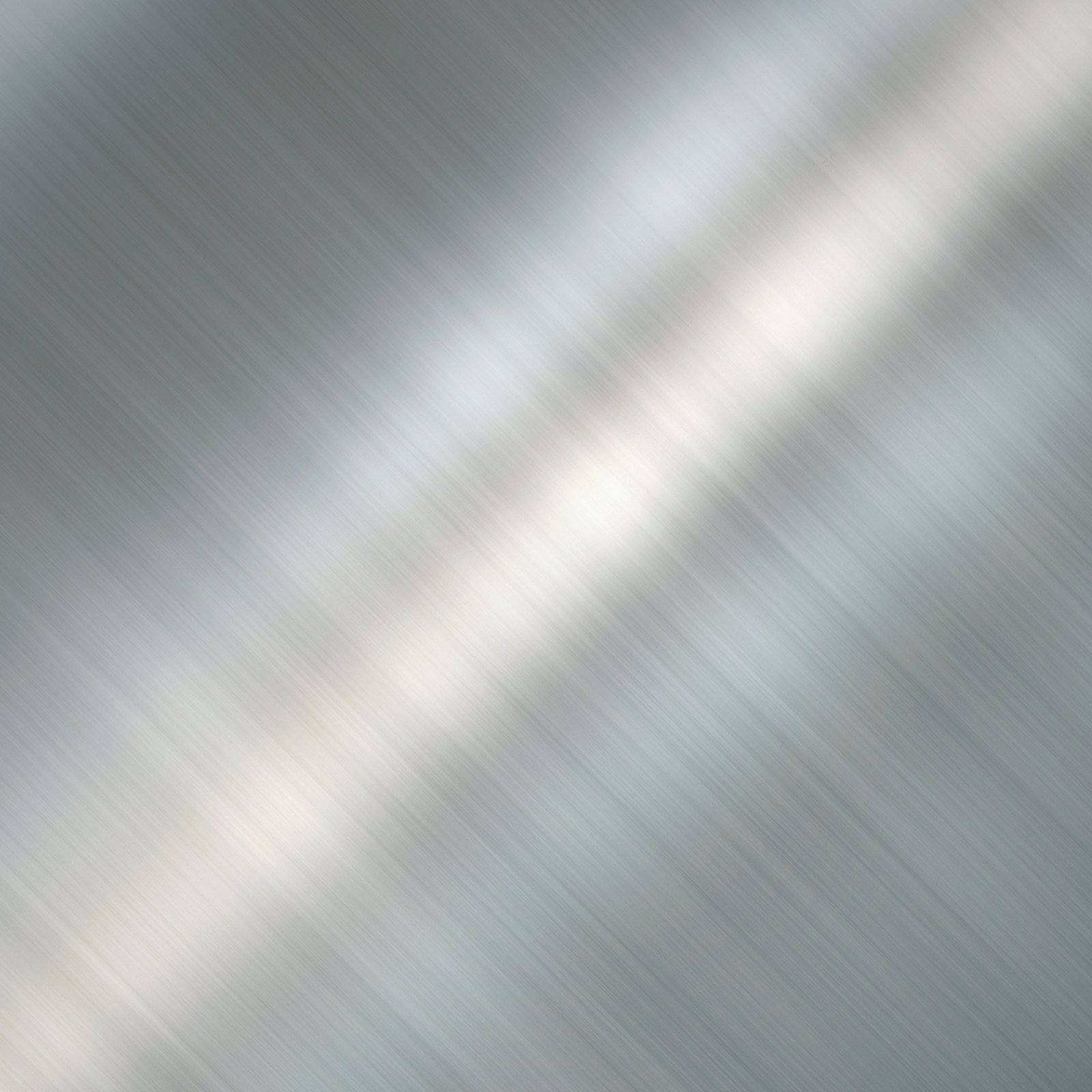
The visual and tactile qualities of a stainless steel sheet are often the first interaction a user has with a product, shaping their perception of its quality and value. For our clients in manufacturing and construction, this first impression is critical. Whether it's the sleek appeal of a kitchen appliance or the clean, professional look of architectural cladding, the finish matters. We will now break down these sensory differences in detail, moving from a general description to a granular analysis of how light interacts with each surface and what that means for your project's visual identity and branding. This deep dive will ensure that your choice is not just functional, but also aesthetically precise.
Visualizing Reflectivity: From Diffused Sheen to Mirror Clarity
The most striking difference between 2B and BA finishes is how they handle light. The 2B finish5 possesses what is best described as a diffused reflectivity. Its surface, while smooth, has microscopic irregularities that scatter light rays in multiple directions. This results in a soft, satin-like sheen rather than a clear reflection. When you look at a 2B sheet, you might see blurry shapes and light sources, but not a distinct, sharp image. This is why it's often compared to a "cloudy" or "hazy" mirror. This quality is highly practical for many applications where high reflectivity is unnecessary or even undesirable, as it is less likely to show fingerprints, smudges, and minor surface imperfections.
The BA finish, by contrast, is engineered for specular reflectivity6. Its exceptionally smooth surface (with a lower Ra value) reflects light rays in a uniform, parallel direction, much like a glass mirror. This creates a sharp, clear, and undistorted reflection. When you look into a BA-finished sheet, you can see your own image and the surrounding environment with remarkable clarity. This high-gloss, vibrant appearance is often sought for decorative purposes, in architectural design, and for premium products where aesthetic appeal is a primary driver. It elevates the perceived value of an item, making it look sleek, clean, and modern.
I worked with an equipment integrator who was developing a new line of laboratory equipment. They chose 2B for the main body and housing of the machines. The non-reflective nature of 2B was ideal for a working environment, reducing glare under bright overhead lighting and hiding minor scuffs from daily use. However, for the control panel fascia and trim, they selected a BA finish. This small touch of mirror-like brightness created a visual focal point, making the user interface look more sophisticated and high-tech, a simple yet effective use of contrasting finishes to enhance product design.
Tactile Differences and the Impact of Surface Smoothness
While you might not choose a finish based on touch alone, the tactile differences between 2B and BA are a direct result of their surface topography and have practical implications. A 2B finish feels very smooth to the touch, a result of the final skin pass through polished rolls. There is no perceptible grain or texture. It is uniform and consistent, which is a key reason for its suitability in food processing and chemical industries, as the smooth surface is easy to clean and less likely to harbor bacteria compared to rougher finishes.
A BA finish feels even smoother, almost glassy. Running your hand over a BA sheet, you can feel the near-total absence of friction or surface variation. This extreme smoothness is a direct consequence of the bright annealing process, which preserves the pristine surface from the cold-rolling mill. This characteristic is not just for looks; it significantly enhances the material's cleanability. The ultra-smooth surface provides fewer microscopic sites for contaminants or corrosive agents to cling to, which can lead to enhanced performance in hygienic or corrosive environments.
Consider the manufacturing of clothes washing machine drums, a common application for BA stainless steel. The primary reason for its use is not just the clean look. The ultra-smooth surface of the BA finish is gentler on fabrics as they tumble, reducing wear and tear on clothes. Furthermore, the smooth surface prevents the buildup of detergent residue and biofilm, contributing to a more hygienic wash cycle over the long term. This is a perfect example of how the tactile quality of a finish, driven by its microscopic smoothness, delivers a tangible performance benefit to the end-user.
Consistency and Uniformity Across the Sheet
Both 2B and BA finishes are known for their high degree of consistency and uniformity, a hallmark of modern steel mill production. However, there are subtle differences to consider. The 2B finish provides excellent uniformity across the entire surface of the sheet. The combination of annealing, pickling, and the skin pass ensures that the color and reflectivity are consistent. This makes it a reliable choice for large-scale projects like wall cladding or tank fabrication, where multiple sheets will be placed side-by-side. Any minor variations are generally imperceptible due to the non-reflective nature of the finish.
The BA finish also boasts exceptional uniformity. However, its high reflectivity can sometimes make it more sensitive to very subtle variations that would be invisible on a 2B surface. Because it reflects its surroundings so clearly, any slight difference in the finish from batch to batch, or even across a very large panel, could potentially be noticeable upon close inspection under certain lighting conditions. For this reason, when using BA for critical aesthetic applications like architectural facades or elevator interiors, it's often recommended to source all material from the same production batch to ensure a perfect match.
As a supplier, we at MFY understand this critical detail. For a high-profile construction project requiring thousands of square meters of BA-finished panels, we worked closely with the contractor to manage the production and delivery schedule. By ensuring all coils were produced in a single, continuous run and meticulously logged, we guaranteed absolute consistency across all delivered sheets. This level of supply chain control is vital for high-stakes projects where aesthetic perfection is non-negotiable, and it highlights the importance of partnering with a supplier who understands the nuances of the materials they provide.
2B finish has a matte gray appearanceTrue
The 2B finish is characterized by its smooth, semi-reflective matte gray surface that diffuses light rather than reflecting it sharply.
BA finish feels rough to touchFalse
BA finish is actually the smoothest option, with a glass-like surface due to its bright annealing process.
What impact do the differences in finishes have on application suitability?
Are you concerned that your choice of finish might not just affect looks, but could also impact the long-term performance and maintenance of your product? This is a valid concern. Choosing a finish that is ill-suited to its environment can lead to premature failure or increased upkeep costs.
The differences directly impact suitability: The corrosion resistance and cleanability of the smoother BA finish7 make it ideal for hygienic or aesthetic applications, while the cost-effectiveness and durability of the 2B finish8 make it a versatile workhorse for industrial, structural, and general-purpose projects.
The link between a finish's properties and its real-world application is where strategic decisions are made. This is about matching the material to the mission. In the sections to follow, I'll break down how specific attributes like corrosion resistance, formability, and even brand perception are tied directly to your choice of finish. Let me share a brief example from one of our clients, a contractor specializing in public infrastructure. They use 2B for most functional elements like gutters and internal supports due to its robustness and cost. However, for decorative installations or high-traffic touchpoints like handrails, they often weigh the benefits of a BA or other polished finishes. Why? Because the smoother surface is not only more visually appealing but also easier to clean and slightly more resistant to certain types of environmental corrosion, reducing long-term maintenance cycles. This foresight into application suitability saves money and enhances the asset's lifespan.
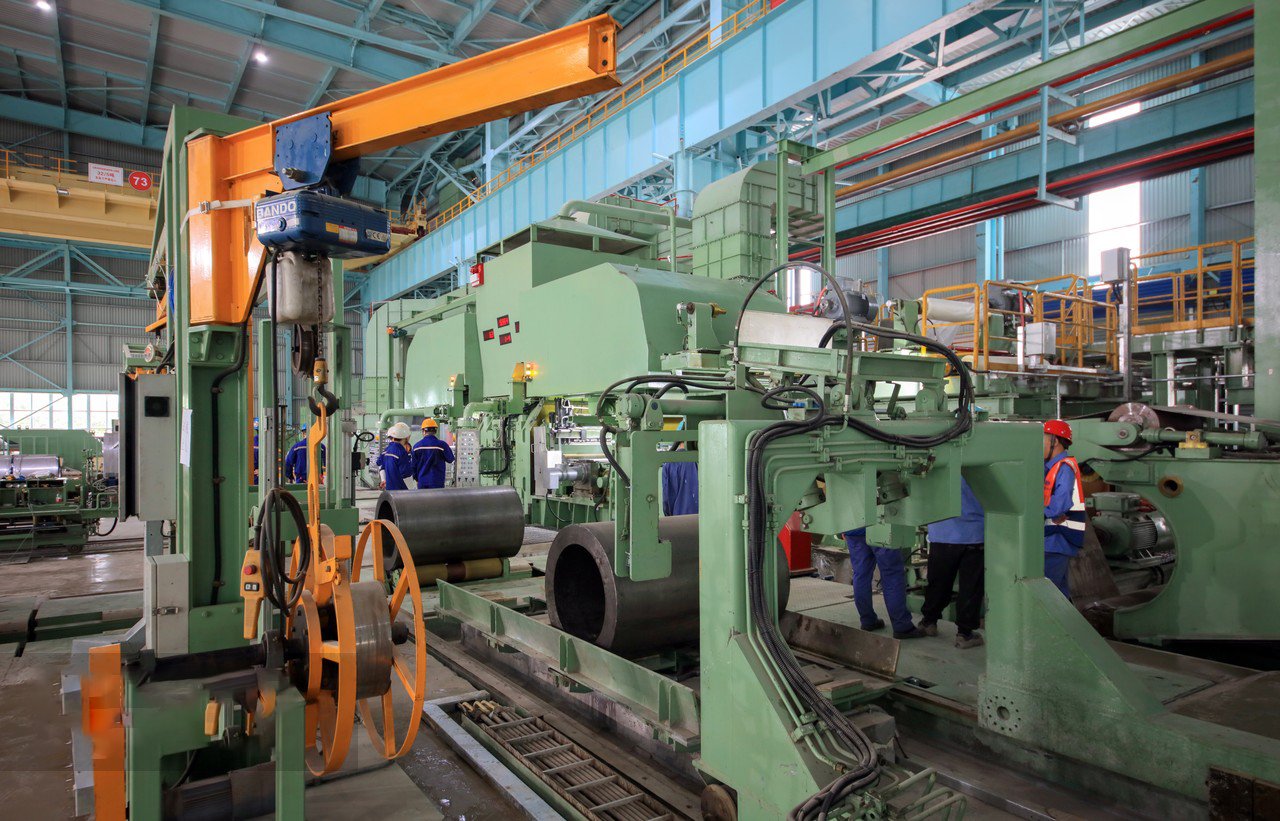
Selecting the right finish is not a matter of simply picking the "better" one; it's about aligning the material's inherent characteristics with the demands of its future environment and function. An exceptional finish in the wrong application is a waste of resources, while an economical finish that meets all performance criteria is a mark of smart engineering. At MFY, we see our role as helping clients make these smart decisions. We will now explore the critical performance implications—from hygiene and corrosion to fabrication and branding—to provide you with a complete picture of how 2B and BA finishes perform in the real world, empowering you to optimize your projects for both function and value.
Corrosion Resistance and Hygiene: A Microscopic Perspective
While both 304 and 316 grade stainless steels9 offer excellent corrosion resistance, the surface finish can play a subtle but important role. Corrosion often begins at microscopic imperfections or crevices on a material's surface. Because a BA finish has a lower surface roughness (Ra value) than a 2B finish, it has fewer microscopic sites where chlorides and other corrosive agents can accumulate and initiate pitting. This makes the BA finish inherently more resistant to staining and corrosion and significantly easier to clean to a sterile level. This is why BA is often specified for applications with stringent hygienic requirements, such as in the pharmaceutical industry, for surgical instruments, and in semiconductor cleanrooms.
The 2B finish, however, remains the undisputed champion in a vast range of industrial and food processing applications. Its surface is still incredibly smooth and offers fantastic corrosion resistance and cleanability that meets or exceeds standards for industries like dairy, beverage, and food preparation. For example, large-scale mixing tanks, conveyors, and countertops are almost universally made from 2B stainless steel. The balance it strikes between high performance, durability, and cost-effectiveness makes it the most logical and widespread choice. The marginal gain in corrosion resistance from a BA finish often does not justify the significant increase in cost for these applications.
Let’s consider a typical customer of ours: a manufacturer of dairy processing equipment. They use our 316L sheets with a 2B finish for milk silos and pasteurization tanks. The 316L grade provides the necessary resistance to chloride corrosion from milk and cleaning agents, while the 2B finish ensures a hygienic surface that can be effectively cleaned-in-place (CIP). While a BA finish could be used, the robust, proven performance of 2B provides the required safety and longevity without inflating the project cost, a critical factor for their customers.
Aesthetics and Brand Perception: From Industrial to Architectural
The choice of finish has a profound impact on the aesthetic appeal of a final product and, by extension, its brand perception. The 2B finish projects a sense of functionality, reliability, and industrial strength. It is a no-nonsense finish that communicates durability. It's perfectly at home in a commercial kitchen, a chemical plant, or as a structural component where performance is the only metric that matters. It doesn't try to be decorative; its value lies in its substance.
The BA finish, on the other hand, is all about communicating premium quality, elegance, and modernity. Its bright, mirror-like surface is used intentionally in product design to create a high-end feel. Think of the shiny trim on a luxury appliance, the gleaming facade of a modern skyscraper, or the interior of a high-end elevator. In these applications, the BA finish is not just a material; it's a design element. It reflects light, makes spaces feel bigger, and gives products a clean, sophisticated look that can command a higher price point and enhance brand value.
We worked with a company that manufactures commercial refrigerators. For their standard models sold to restaurants, they used 2B for the interior and exterior—it's durable, easy to clean, and cost-effective. However, when they launched a new line of display refrigerators for high-end cafes and delis, they strategically switched to a BA finish for the interior. The bright, reflective interior made the food products inside look more vibrant and appealing, directly boosting sales for their customers. This simple change in material specification transformed a utilitarian piece of equipment into a marketing tool, demonstrating a powerful link between surface finish and commercial success.
Fabrication and Processing: How Finish Affects Workflow
The chosen finish also has implications for the manufacturing and fabrication process. 2B stainless steel is generally more forgiving during handling and fabrication. Its less reflective surface is better at masking minor scratches, scuffs, and fingerprints that can occur during cutting, bending, and welding. Furthermore, the surface of a 2B finish provides a good foundation for other finishes. It can be easily polished up to a No. 4 "brushed" finish or other textures as required. This versatility makes it a flexible starting point for many fabricators.
A BA finish, conversely, requires more careful handling throughout the fabrication workflow. Its perfect, mirror-like surface is highly susceptible to scratching and can easily show fingerprints. To protect the finish, BA sheets are almost always supplied with a removable protective plastic film (PVC coating). This film must be kept on for as long as possible during fabrication—through laser cutting, bending, and assembly—and only removed at the final stage. This adds a step to the process (film removal) and requires a higher level of care from operators to prevent costly damage to the surface.
One of our clients, a metal fabrication workshop, shared their experience. When they work on large batches of industrial enclosures using 2B sheets, their workflow is fast and efficient. When a project specifies BA for decorative panels, they have to change their process. They designate specific "clean" workbenches, use softer tooling clamps, and implement stricter handling protocols to avoid scratching the PVC film. While the final result is beautiful, the "kid-gloves" treatment required for BA slows down production and increases labor costs per part. This practical trade-off between the beauty of BA and the rugged efficiency of 2B is a daily consideration in workshops around the world.
2B finish is harder to cleanFalse
While BA is easier to clean to sterile levels, 2B finish still offers fantastic cleanability that meets industry standards for food processing and other applications.
What considerations should be made when choosing between 2B and BA finishes?
Are you weighing the upfront cost against the long-term value and unsure which factors should be prioritized? Making this choice involves more than just aesthetics; it's a strategic decision. You must balance budget, performance requirements, and the final application's environment to avoid costly mistakes.
Key considerations include the project budget (2B is more economical)7, aesthetic requirements (BA is for high-gloss, decorative looks)8, the operational environment (BA offers superior cleanability for hygienic spaces), and fabrication demands (BA requires more careful handling to prevent scratches).
Choosing correctly means optimizing your investment. In the following analysis, I'll guide you through a strategic evaluation process, covering cost-benefit analysis, long-term maintenance, and aligning the finish with your product's market position. For instance, a distributor client of ours in Russia stocks a higher volume of 2B finish sheets because they serve a broad industrial market. However, they also maintain a strategic inventory of BA sheets in common gauges to cater to architectural and high-end manufacturing clients who are willing to pay a premium for the superior aesthetic. Their inventory strategy is a direct reflection of a well-considered balance between cost, demand, and application, a principle we will now explore in detail to refine your own decision-making process.
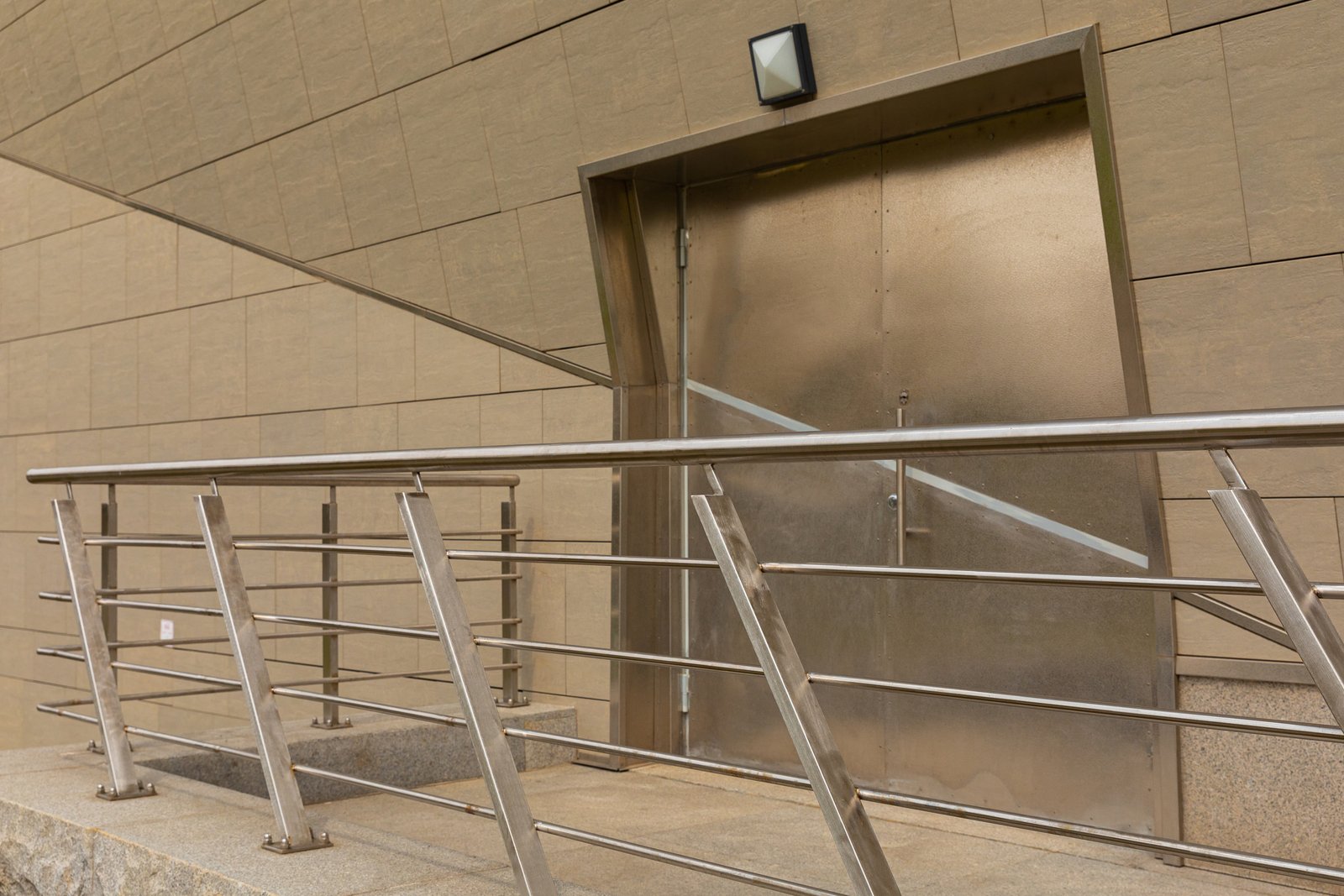
The decision between 2B and BA is a critical inflection point in project planning, with ripples that affect everything from the procurement budget to the final user's experience. It requires a holistic view that transcends a simple comparison of price tags. As your partner in the stainless steel supply chain, we at MFY are committed to providing not just materials, but also the expertise to help you navigate these choices effectively. Let's delve into the crucial considerations of cost, maintenance, and strategic intent to ensure your selection is the most intelligent one for your specific context.
Cost-Benefit Analysis: Beyond the Initial Price Tag
The most immediate and often decisive factor is cost. The 2B finish is the standard, most widely produced stainless steel finish in the world. Its efficient and established manufacturing process makes it the most economical option. The BA finish, requiring a more complex, controlled-atmosphere annealing process to achieve its mirror-like surface, comes at a significant premium. This cost difference can be substantial, especially for large-scale projects involving many tons of material. Therefore, the first question must always be: does the application's functional or aesthetic requirement justify this additional cost?
A simple cost-benefit analysis is crucial. For an industrial chemical tank, the answer is almost certainly no. A 2B finish provides all the necessary corrosion resistance and durability. The extra expense for a BA finish would be pure waste. However, for a consumer product like a high-end coffee machine, the analysis shifts. The BA finish on the exterior might add $5 to the unit's material cost, but its premium look could allow the product to be positioned in a higher market segment, increasing the retail price by $50. In this case, the return on investment for the more expensive finish is excellent.
I often advise our clients, especially distributors, to think in terms of value, not just price. A distributor might be hesitant to stock the more expensive BA coils. But by analyzing their local market, they might find a growing demand from architectural firms or custom appliance makers. By stocking a limited amount of BA, they position themselves as a specialty provider, capturing high-margin sales that their competitors, who only stock 2B, cannot. This strategic investment in a higher-cost product can lead to greater overall profitability.
Factoring in Long-Term Maintenance and Lifespan
The choice of finish can influence long-term maintenance costs and the overall lifespan of the product. The ultra-smooth surface of a BA finish is less prone to fouling and microbial adhesion and is generally easier to clean than a 2B finish. In environments where frequent, stringent cleaning is required, such as in food, pharmaceutical, or medical applications, using a BA finish can lead to long-term savings in time, labor, and cleaning chemicals. The superior cleanability can also contribute to a longer service life by minimizing opportunities for crevice corrosion to take hold.
Conversely, the forgiving nature of the 2B finish is a maintenance advantage in other contexts. Its matte surface is much better at hiding minor scratches, scuffs, and fingerprints that are inevitable in high-traffic or industrial environments. A BA-finished panel in a busy public hallway would quickly become a maintenance nightmare, constantly requiring polishing to remove smudges and highlighting every minor scratch. A 2B or a No. 4 brushed finish would be far more practical, looking better for longer with less intensive upkeep.
Let's look at the example of a construction contractor building a new hospital. They specified BA-finished sheets for the interior of the operating rooms. The rationale was clear: the supreme cleanability and non-porous surface are critical for maintaining a sterile environment, directly impacting patient safety. The higher initial cost was justified by the long-term benefits of improved hygiene and reduced cleaning effort. For the hospital's kitchen, however, they used 2B for countertops and backsplashes. Here, the surface is still highly cleanable and meets all health codes, but it is also more resistant to the daily wear and tear of a busy kitchen, making it the more durable and cost-effective choice for that specific environment.
Aligning the Finish with Product Positioning and Brand
Finally, the choice between 2B and BA must be aligned with the product's intended market position and the brand's identity. A surface finish is a key part of a product's visual language. Is your brand about rugged, no-frills performance, or is it about luxury, design, and premium experience? The material finish should reflect that. Using a BA finish on a tool designed for a muddy construction site would be incongruous. Similarly, using a standard 2B finish on a piece of designer furniture would undermine its aesthetic intent.
| Feature | 2B Finish | BA (Bright Annealed) Finish |
|---|---|---|
| Appearance | Smooth, matte, "cloudy mirror" | Highly reflective, mirror-like |
| Reflectivity | Moderate (40-60%) | High (70-90%) |
| Surface Roughness (Ra) | 0.1 - 0.5 µm | 0.05 - 0.1 µm |
| Relative Cost | Standard / Economical | Premium / Higher |
| Best For | Industrial, general-purpose, non-cosmetic | Decorative, architectural, hygienic |
| Handling | More forgiving to scratches | Requires careful handling (PVC film) |
This alignment was perfectly understood by a manufacturing client of ours who produces both contractor-grade tools and a separate line of premium hand tools for hobbyists. For their contractor line, they used 2B finished components—the focus was on durability and cost. For their premium hobbyist line, they used BA-finished accents and polished components. The gleaming finish communicated precision and quality, appealing to a customer base that values craftsmanship and aesthetics as much as function. They successfully used the stainless steel finish as a tool to segment their market and strengthen two distinct brand identities.
BA finish is easier to cleanTrue
The ultra-smooth surface of BA finish reduces microbial adhesion and requires less cleaning effort, making it ideal for hygienic environments.
2B finish is more expensiveFalse
2B is actually the most economical option due to its standard manufacturing process, while BA requires more complex production.
What are the best practices for utilizing 2B and BA finishes in different projects?
Are you looking for actionable strategies to apply these finishes effectively in your own projects? Theory is important, but practical application is what drives success. You need clear guidelines on when and how to deploy 2B and BA to maximize their benefits and avoid common pitfalls.
Best practice dictates using 2B finish applications9 for functional, high-wear, or cost-sensitive applications like industrial tanks and internal components. Utilize BA for high-visibility, aesthetic-driven projects such as architectural facades and premium appliances, always ensuring careful handling with its protective film during fabrication.
Adopting these best practices ensures that you are not just selecting a material, but engineering a solution. The following discussion will move into specific, strategic recommendations for various sectors, including manufacturing, construction, and design. I will share insights on creating hybrid designs and managing the supply chain for these finishes. Consider a manufacturer of commercial elevators. A best-practice approach for them, which we've helped implement, involves using durable, cost-effective 2B for the car's structural frame and subfloor. For the interior panels and doors visible to passengers, they use BA finish stainless steel10 or other decorative finishes to create a luxurious and modern ambiance. This targeted use of each finish optimizes cost, durability, and passenger experience, representing a truly intelligent application strategy.
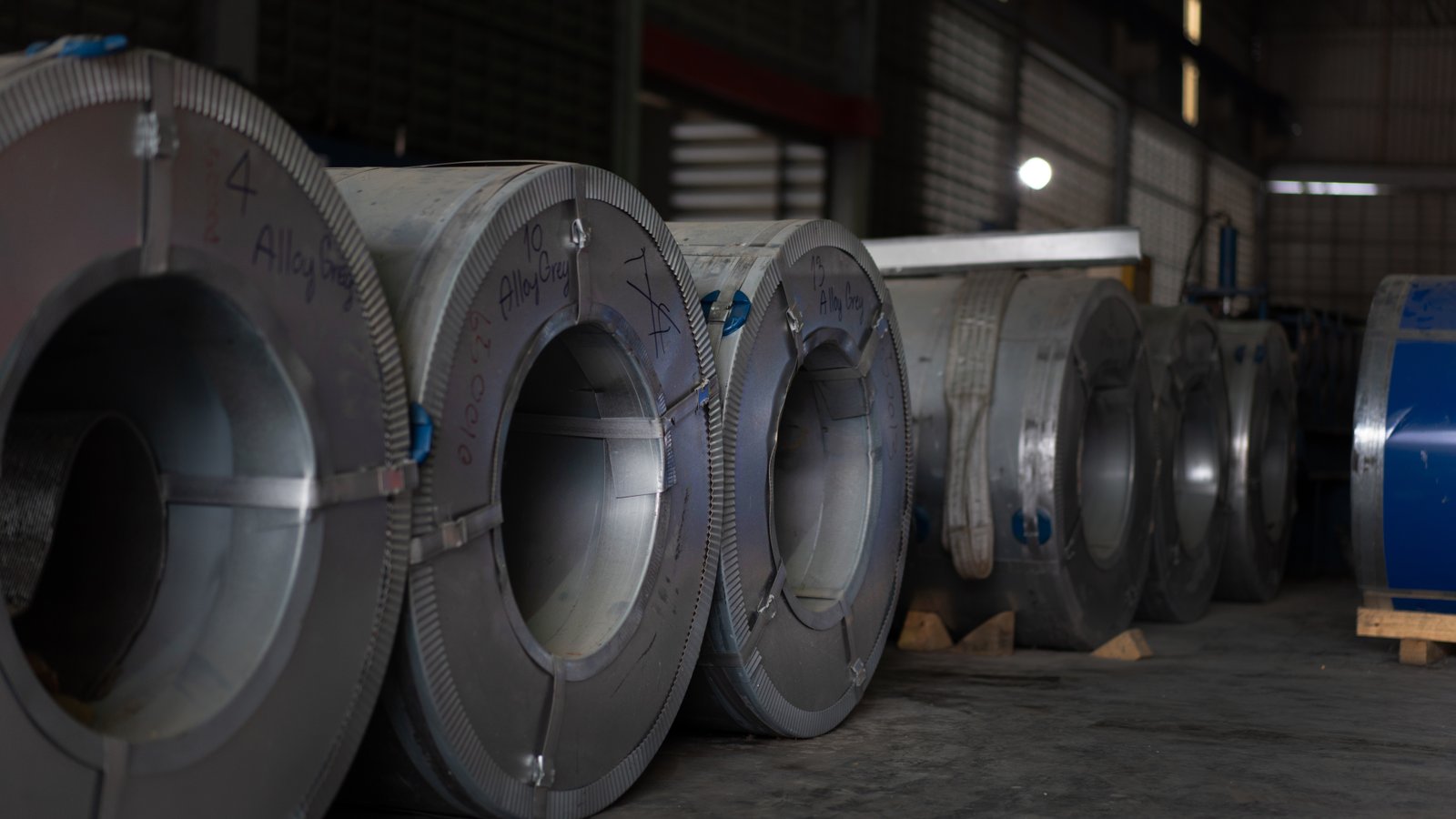
Turning knowledge into action is the final and most crucial step. A well-chosen finish can elevate a project from merely functional to truly exceptional. At MFY, our fully integrated supply chain is designed to support these best practices, ensuring you get the right material, with the right specifications, right when you need it. We will now explore practical, sector-specific strategies and innovative approaches to help you leverage the unique strengths of both 2B and BA finishes, transforming your design intent into a tangible, high-performing reality.
Strategy for Manufacturing: The Hybrid Approach
One of the most effective best practices in manufacturing is the "hybrid approach," where both 2B and BA finishes are used strategically within the same product. This allows manufacturers to control costs without sacrificing the premium look where it matters most. The core principle is to use the economical and durable 2B finish for all non-visible or purely structural components. This includes internal brackets, housings, back panels, and support frames. For the surfaces that the user sees and touches—the front panels, control interfaces, lids, and decorative trim—the more expensive and aesthetically pleasing BA finish is used.
This strategy is common in the home appliance industry. Take a high-end dishwasher, for example. The exterior door panel might be a beautiful BA stainless steel to match a modern kitchen aesthetic. The internal tub is also often BA, not just for looks but for its hygienic properties and durability against harsh detergents. However, the internal chassis, the motor housing, the support legs, and other components hidden from view are likely made from 2B or even less-finished galvanized steel to minimize cost while maintaining structural integrity. This intelligent allocation of resources allows the manufacturer to deliver a product that looks and feels premium at a competitive price point.
As a supplier, we facilitate this by offering a wide range of products and processing services. A client of ours, a manufacturer of food service equipment, orders both 2B and BA coils from us. Our processing center then cuts the 2B coils into specific sizes for internal parts and the BA coils into precise shapes for the exterior panels, ensuring the protective PVC film remains intact. By sourcing both from MFY, they streamline their supply chain, ensure consistent material quality across finishes, and benefit from our integrated production and delivery capabilities.
Strategy for Engineering & Construction: Matching Finish to Environment
In engineering and construction, the primary best practice is to meticulously match the finish to the specific environmental exposure and public interaction level of each component. For large-scale structural elements, industrial piping, cable trays, or roofing that are not closely inspected, 2B is the default choice. Its excellent performance-to-cost ratio and proven durability make it the workhorse of the construction industry. It delivers the required longevity and corrosion resistance without unnecessary aesthetic expense.
For architectural applications, the strategy becomes more nuanced. For exterior cladding on a high-rise building, a BA finish can create a stunning, dynamic facade. However, the designer must consider factors like glare and the potential for the mirror-like surface to show waviness ("oil canning") over large, flat spans. In high-traffic public areas like subway stations or airport terminals, a BA finish on walls would be a maintenance liability. Here, a 2B finish or, more commonly, a more robust No. 4 brushed finish (which is often created by polishing a 2B base) is a far better choice as it effectively hides fingerprints and minor vandalism.
I recall an engineering contractor working on a water treatment plant. They used our 316L 2B sheets for the vast network of process tanks and piping, a perfect application of a cost-effective, corrosion-resistant material. For the administration building's entrance lobby, however, they wanted to make a statement. They used our BA-finished sheets as decorative wall panels behind the reception desk. This created a bright, modern, and clean focal point that projected an image of cutting-edge technology and hygiene, perfectly aligning with the facility's purpose. It was a targeted, intelligent use of a premium finish where it would have the most impact.
Strategy for Distributors and Traders: Smart Inventory Management
For distributors and traders, the best practice revolves around smart inventory management that reflects the demands of their specific market. It's not financially viable for most distributors to stock every possible grade, thickness, and finish of stainless steel. A deep analysis of the local customer base—be it industrial manufacturers, construction firms, or small-scale fabricators—is essential. For most markets, 80% of the demand will be for the standard 2B finish in common grades like 304 and 316L. This should form the core of the inventory, ensuring high turnover and availability for the broadest customer segment.
The strategic part comes in managing the "other 20%". This means identifying niche but profitable demands for finishes like BA. A distributor in a region with a burgeoning architectural design scene or high-end manufacturing should consider holding a strategic stock of BA sheets in popular thicknesses. This positions them as a value-added supplier capable of fulfilling premium orders quickly, a significant competitive advantage. They can command higher margins on these products and build loyalty with high-value clients. The key is to balance the holding cost of this more expensive inventory against the potential for profitable, quick-turnaround sales.
We work closely with our distribution partners, like one in Southeast Asia, to help them optimize this balance. By analyzing their sales data and local market trends together, we can forecast demand more accurately. Our rapid export delivery system allows them to maintain a leaner inventory of specialty items like BA sheets, confident that they can replenish stock quickly from our extensive production capacity. This partnership approach minimizes their risk while allowing them to confidently serve a wider range of customers, from large industrial buyers to bespoke design studios.
2B is ideal for industrial applicationsTrue
2B finish is cost-effective and durable, making it perfect for functional components like industrial tanks and internal parts where aesthetics aren't a priority.
BA finish is maintenance-freeFalse
BA's mirror-like surface actually requires careful handling and maintenance as it shows fingerprints and scratches easily, unlike more forgiving finishes.
Conclusion
Ultimately, the choice between a 2B and BA finish hinges on balancing cost, aesthetics, and application-specific performance. 2B is the versatile, economical workhorse for industrial use, while BA provides a premium, reflective look for decorative and hygienic applications where visual impact justifies the investment.
-
Learn how the choice between 2B and BA affects project costs and aesthetic outcomes. ↩
-
Discover the ASTM standards that define the quality and appearance of 2B and BA finishes. ↩
-
Understand the technical specs that demystify the differences between these finishes. ↩
-
Learn about the visual distinctions between matte and mirror finishes for informed material choices. ↩
-
Gain insights into the practical advantages of matte finish in various applications where glare is undesirable. ↩
-
Discover the importance of mirror-like surfaces in enhancing aesthetic value and product design. ↩
-
Learn the key advantages and disadvantages of BA and 2B finishes in various applications ↩ ↩
-
Understand the cost-effectiveness and durability benefits of 2B finish in structural and industrial uses ↩ ↩
-
Explore why 304 and 316 grades are preferred for specific industries with corrosion concerns ↩ ↩
-
Understand the economic implications when choosing between cost-effective and premium finishes ↩
Have Questions or Need More Information?
Get in touch with us for personalized assistance and expert advice.
